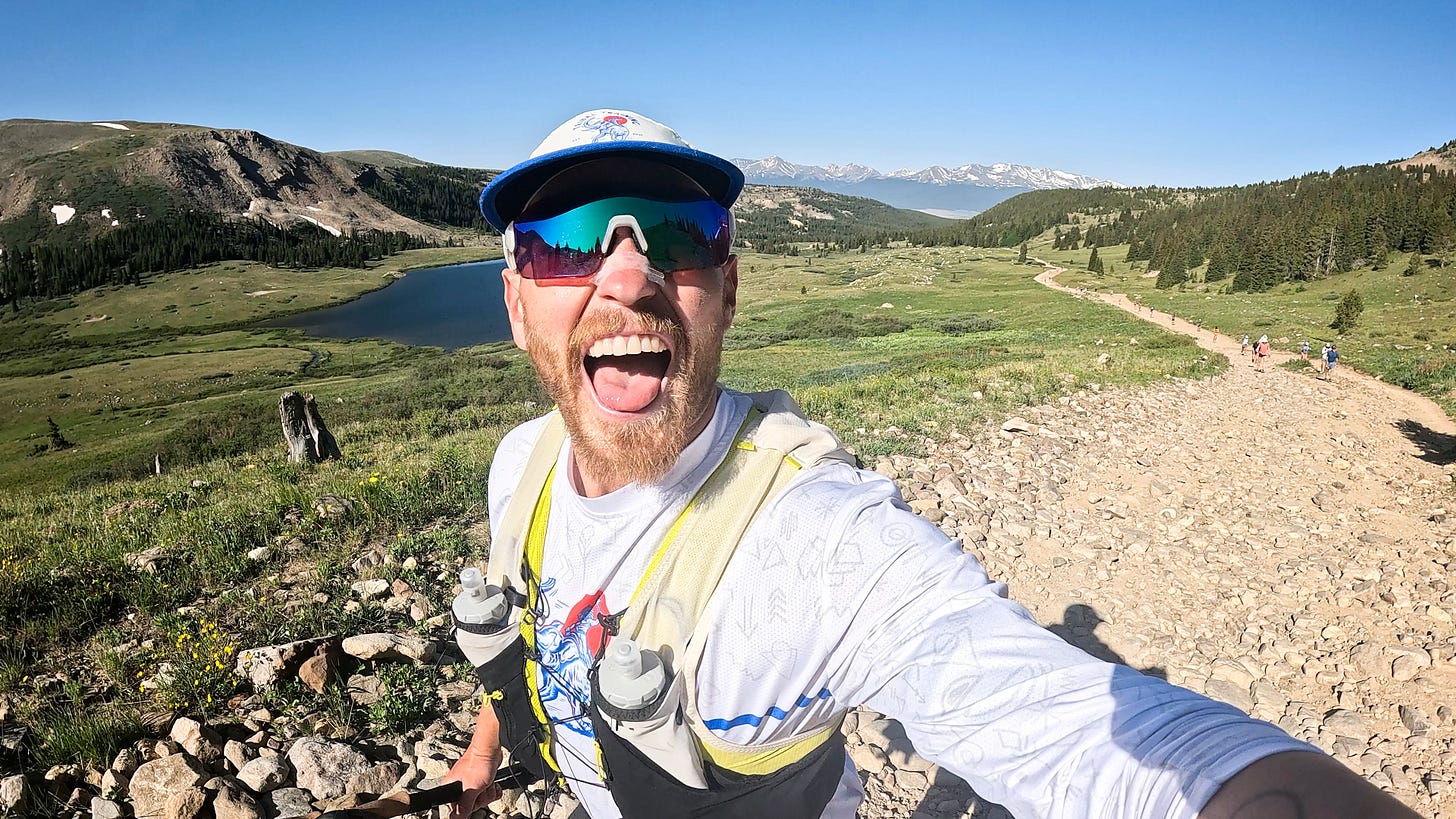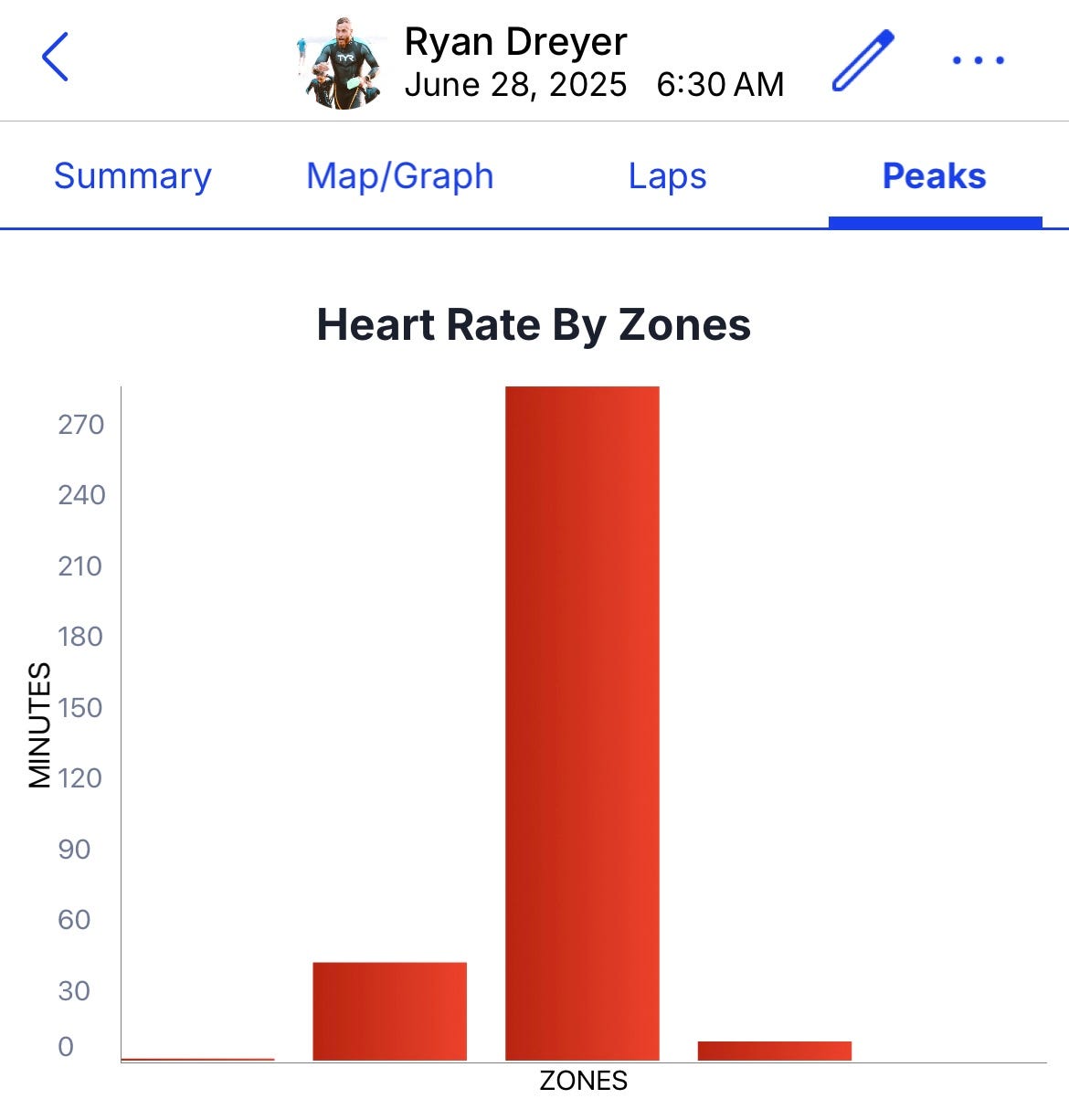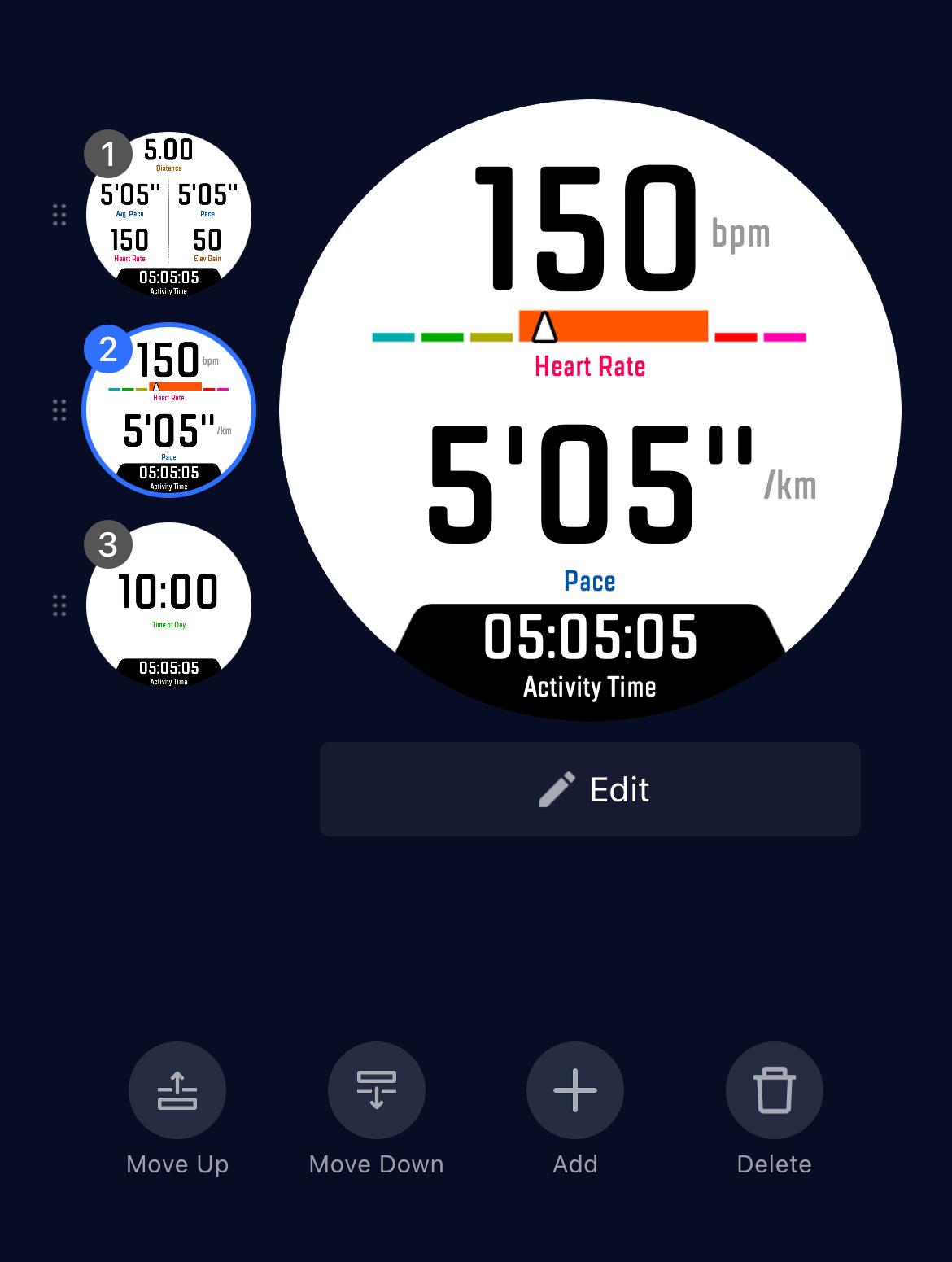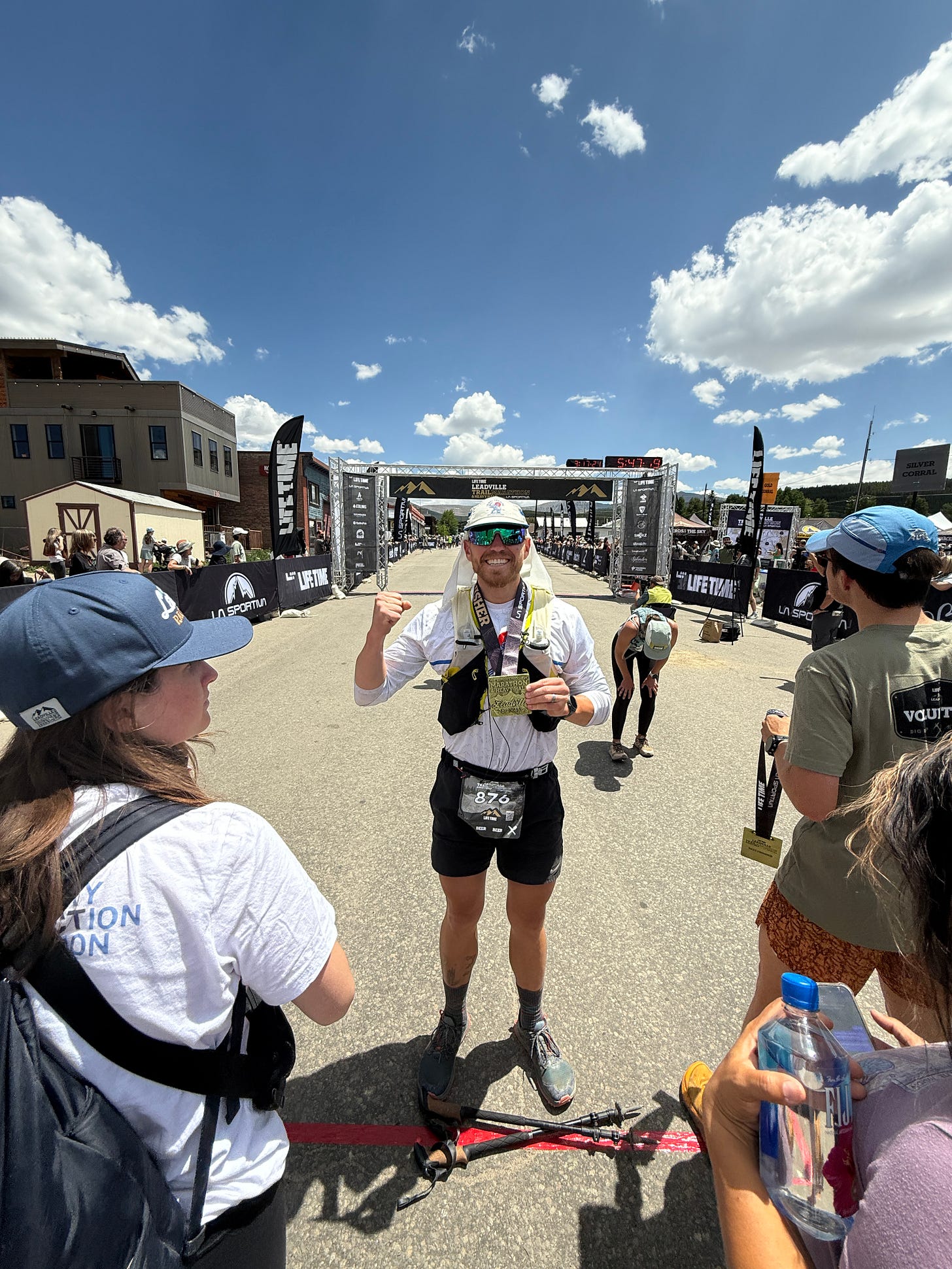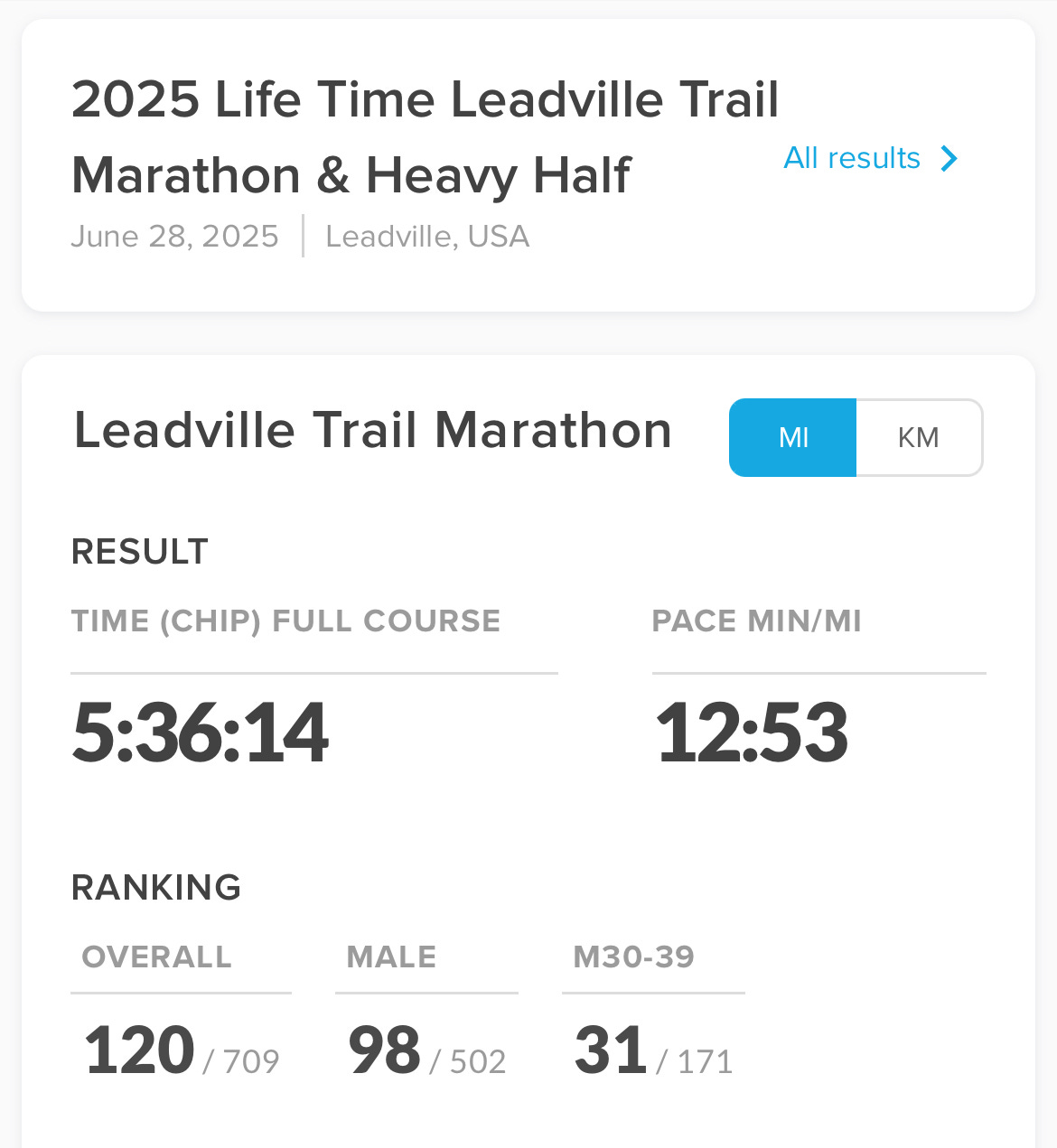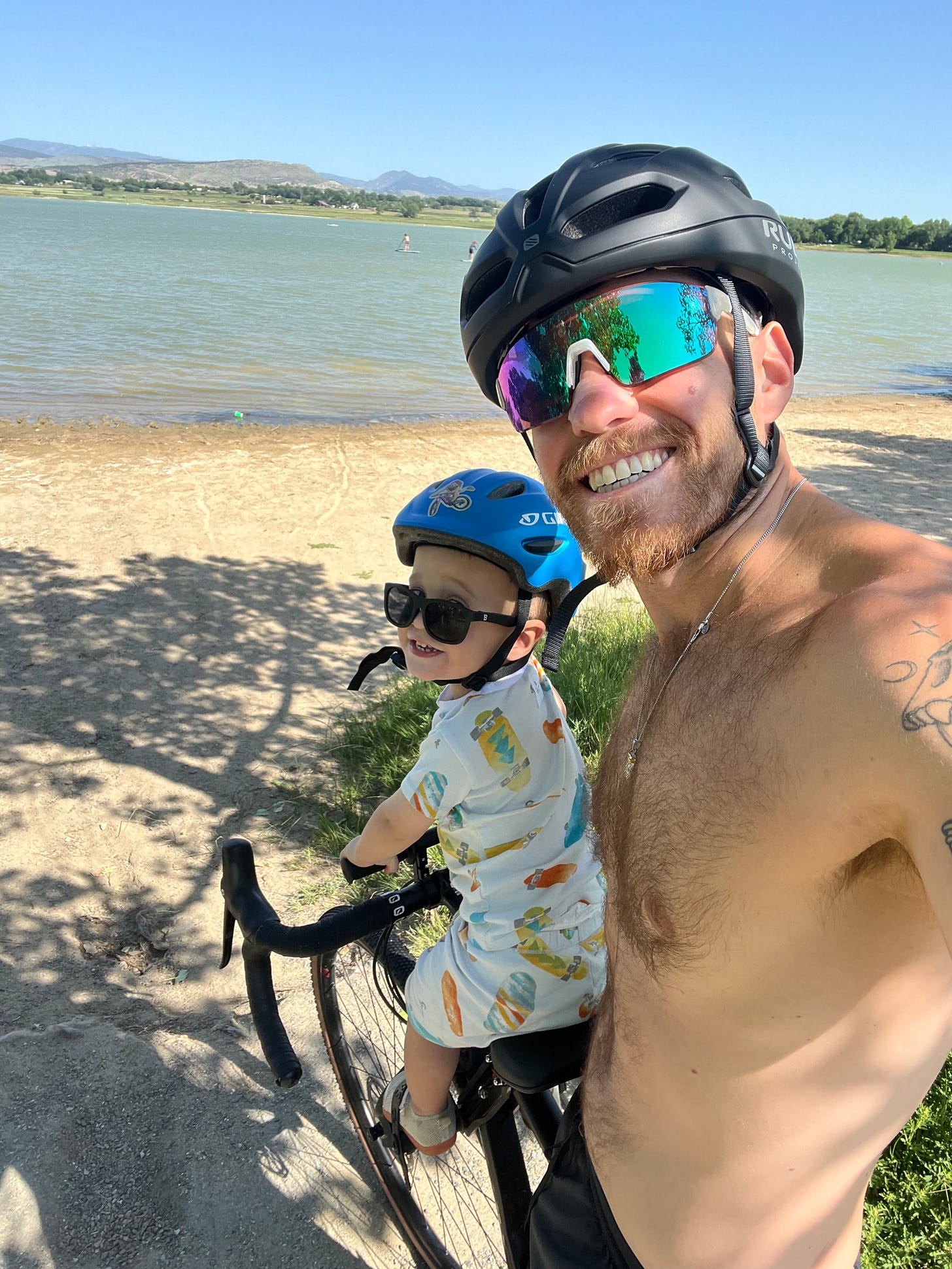On Saturday, I raced the Leadville Trail Marathon.
It’s the hardest marathon in America.
26.2 miles
6k feet of gain
starts at over 10,000 feet elevation
climbs above 13,000 feet
I’d never done anything like it.
And it was one of best-executed endurance races of my life.
Today, I want to share 9 tactical lessons from my training and racing process you can apply to any endurance event - whether you’re running your first trail race or training for an Ironman.
I’ll also share how I’m using these experiences to keep growing as an athlete, coach, and father.
Here we go.
Quick Side Note:
Prefer to listen?
I recorded a podcast on these 9 lessons, with bonus details of the race.
Listen here.
Lesson 1: Choose New Arenas of Competition
In 2025, I decided to step outside my comfort zone.
I wanted to put my fitness to the test in brand-new competition environments.
Ironmans are familiar territory for me. It’s not that it’s easy. But the process is predictable.
So I signed up for a bunch of events I’d never done before.
Through the first 6 months of this year, here are the 5 I’ve competed in:
An uphill ski race
A 50 mile ultramarathon
A half marathon raced hard
A 50K trail race
And now, the Leadville Trail Marathon
All of them are shorter than my peak running and triathlon events in 2024.
Every one was different. Each forced me to:
adapt
use my skills in new ways
stay a student
Takeaway: Growth doesn’t always come from going bigger. Sometimes, it comes from going different.
Lesson 2: Embrace Quick Turnaround Racing
I left home at 1:30 pm on Friday afternoon and was back grilling dinner for my family by Saturday evening.
Less than 27 hours door to door.
My 50k 3 weeks ago was 30 hours door to door.
Finding races within driving distance has helped me compete more often (and create new experiences) without putting strain on my family.
If you think endurance racing has to be a giant production, consider a different perspective.
There are events 2-3 hours from you that can fit seamlessly into your life.
Lesson 3: Heart Rate Execution
Heart rate awareness made my race execution surgical.
I knew exactly where my lactate threshold was: 153 bpm.
Coaches Note:
Lactate Threshold (or LT2) is where lactate starts accumulating at a rate faster than your body can clear it.
It’s an unsustainable work rate for long endurance efforts.
The moment my watch crept past 152, I dialed back.
Holding a steady high Zone 3 heart rate (146–150) let me push as hard as I could without blowing up.
The result of this strategy?
An all time best HR for anything over 3 hours.
Side Note: Need help setting your HR Zones?
I built a custom Tribal Zone Calculator that includes the bike and run tests I use as a coach and athlete.
It tells you exactly how to measure your HR Threshold and uses an automated calculator to give you your exact zones.
Lesson 4: Watch Data Screen Setup
I customized my Coros watch to show:
A big heart rate graph
Pace
Total time
No distance.
I didn’t want to get caught obsessing over miles.
My focus was to hold effort for 5 to 6 hours and let the miles take care of themselves.
Lesson 5: Real-Time Problem Solving
When I reached Mosquito Pass (the high point at 13,185 feet), I was WAY behind on hydration.
my heart rate had dipped 5-10 beats
my pace was slowing (at same effort level)
and it had been 2 hours since my last pee…
So when I hit the Aid Station, I…
peed (dark yellow)
drank 2x full flasks of water
took 5 minutes to let my body relax… and take a picture
And I was able to get right back to pushing for the final 2.5+ hours of the race.
Small decisions like this can make or break your ability to sustain hard effort.
Lesson 6: Tactical Use of Poles
Less than 10% of the field carried poles.
And I almost left mine in the car when I saw basically no athletes with poles pre race.
But I’m glad I didn’t.
Poles helped me with posture, efficiency, and descending safely on loose rock.
They were a huge asset.
But it’s notable to me that fastest athletes did not use poles.
That tells me there’s an evolution of trail skill and speed up ahead on my development path where poles aren’t optimal for certain races, distances, terrains, etc.
Lesson 7: Dynamic Movement and Posture
In an ultra, you have more options than to just run or walk.
Throughout the day, I alternated between:
Power hiking
Quick-cadence hiking
Controlled running
Faster “opener” running on smooth descents
When you feel yourself fading, change how you move.
It generates new energy, changes muscle load, and creates a mental spark.
Lesson 8: Anchoring to Other Runners
I used runners around me as reference points.
Once the field thinned out and settled in (60-90 mins in), I observed who was around me.
If someone passed me on a decent, I noted it.
If I caught them on the climb, I noted it too.
This helped me capitalize on speed when I felt good, and stay efficient when I felt I needed to drop my effort
All without getting sucked into racing outside my plan.
Lesson 9: Understand the Bigger Picture
In the final miles, both calves started to twitch.
I had enough left to sprint the finish, but I held steady instead.
There’s a bigger goal ahead: Ironman World Championships
One finish line isn’t worth an injury that derails the next mission.
Final Stats
I finished in 5:36:14.
120/709 overall
98/502 male
31/171 age group
Wrapping Up
The Leadville Trail Marathon wasn’t just another race on the calendar. It was a proving ground for everything I’ve been working to build:
A mindset that seeks out new arenas and stays a student.
An approach to racing that prioritizes execution over ego.
A commitment to keep growing as an athlete without sacrificing my role as a father and a husband.
No matter what you’re training for, I hope you take this as an invitation:
Keep learning.
Keep testing yourself.
Stay curious enough to step into something new.
One life. Send it!




